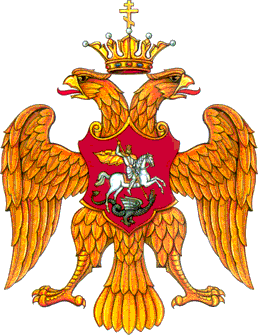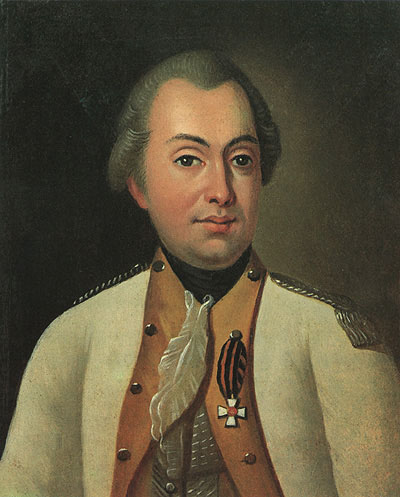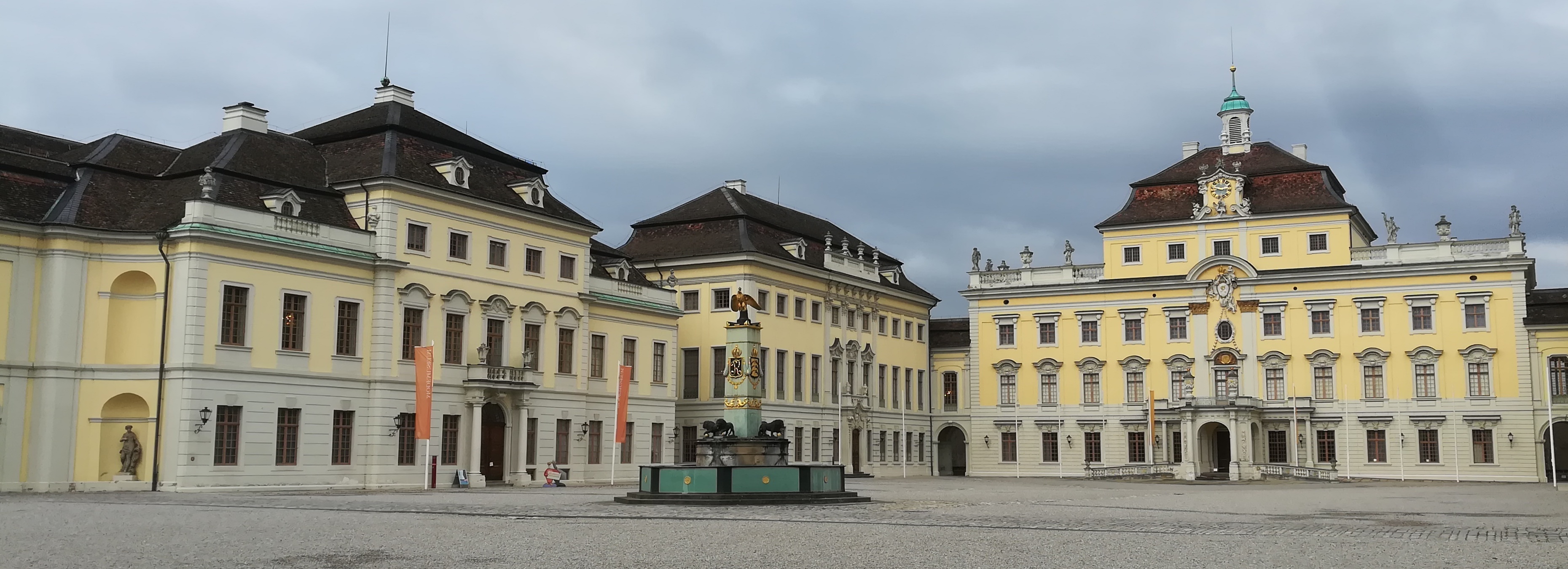|
Nikolai Rumyantsev
Count Nikolai Petrovich Rumyantsev (; 3 April 1754 – 3 January 1826), born in Saint Petersburg, was Russia's Foreign Minister and Chancellor of the Russian Empire in the run-up to Napoleon's invasion of Russia (1808–12). He was the son of Field Marshal Pyotr Rumyantsev-Zadunaisky from the Rumyantsev comital family. Background Rumyantsev and his brother were provided with basic education at home. Their mentor was Friedrich Melchior, Baron von Grimm. In 1774 they went to Leiden University where they studied history, law and language. Official career Rumyantsev was the first envoy of Russia to the Holy Roman Empire after Russia became a guarantor of the imperial constitution through the Treaty of Teschen (1779). He arrived in 1782 accredited as ambassador to the Electoral Rhenish Circle, Upper Rhenish Circle, Swabian Circle, Franconian Circle, Electorate of Mainz, Electorate of Cologne, Palatine Zweibrücken, Duchy of Württemberg, Margraviate of Baden and Landgraviate ... [...More Info...] [...Related Items...] OR: [Wikipedia] [Google] [Baidu] |
Minister Of Foreign Affairs (Russia)
The minister of foreign affairs of the Russian Federation is a high-ranking Russian government official who heads the Ministry of Foreign Affairs (Russia), ministry of foreign affairs of the Russian Federation. The foreign minister is one of the five presidential ministers, along with the ministers of Minister of Defence (Russia), defence, Minister of Internal Affairs (Russia), interior, Minister of Emergency Situations (Russia), emergencies and Ministry of Justice (Russia), justice. Although they are members of the Government of Russia#Current Cabinet, Cabinet, they are directly subordinate to the President of Russia, President. The foreign minister, like other presidential ministers, is nominated and appointed by the President after consultation with the Federation Council (Russia), Federation Council (whereas non-presidential ministers are nominated by the Prime Minister of Russia, Prime Minister and appointed by the President after approval by the State Duma). The foreign mi ... [...More Info...] [...Related Items...] OR: [Wikipedia] [Google] [Baidu] |
Franconian Circle
The Franconian Circle () was an Imperial Circle established in 1500 in the centre of the Holy Roman Empire. It comprised the eastern part of the former Franconian stem duchy—roughly corresponding with the present-day Bavarian ''Regierungsbezirke'' of Upper Franconia, Upper, Middle Franconia, Middle and Lower Franconia—while western Rhenish Franconia belonged to the Upper Rhenish Circle. The title of a "Duke of Franconia" was claimed by the Bishopric of Würzburg, Würzburg bishops. Emergence and location As early as the Middle Ages, Franconia had very close links to king and empire. Located between the Rhenish territories of the empire and the Kingdom of Bohemia, Franconia, which included the former Duchy of Franconia, had been one of the centres of empire for a long time. By order of Emperor Louis IV (HRR), Louis of Bavaria, Bamberg, Würzburg, Eichstätt and Fulda with the Hohenzollern Burgraves of Nuremberg, Counts of Henneberg, the Castell and Hohenlohe, the three ep ... [...More Info...] [...Related Items...] OR: [Wikipedia] [Google] [Baidu] |
Mikhail Illarionovich Kutuzov
Prince Mikhail Illarionovich Golenishchev-Kutuzov-Smolensky (; – ) was a Field Marshal of the Russian Empire. He served as a military officer and a diplomat under the reign of three Romanov monarchs: Empress Catherine II, and Emperors Paul I and Alexander I. Kutuzov was shot in the head twice while fighting the Turks (1774 and 1788) and survived the serious injuries seemingly against all odds. He defeated Napoleon as commander-in-chief using attrition warfare in the Patriotic war of 1812. Alexander I, the incumbent Tsar during Napoleon's invasion, would write that he would be remembered amongst Europe's most famous commanders and that Russia would never forget his worthiness. Early career Youth Mikhail Kutuzov was born in Saint Petersburg on 16 September 1745. His father, Lieutenant-General (1717–1784), had served for 30 years with the Corps of Engineers, had seen action against the Turks and served under Peter the Great. His mother was Anna Illarionovna Beklemisheva ... [...More Info...] [...Related Items...] OR: [Wikipedia] [Google] [Baidu] |
Treaty Of Fredrikshamn
The Treaty of Fredrikshamn, or the Treaty of Hamina, was a peace treaty concluded between Sweden and Imperial Russia on 17 September 1809. The treaty concluded the Finnish War and was signed in the Finnish town of Fredrikshamn ( Hamina). Russia was represented by Nikolay Rumyantsev and David Alopaeus (Russian ambassador to Stockholm), while Sweden by Infantry General Kurt von Stedingk (former Swedish ambassador to Saint Petersburg) and Colonel Anders Fredrik Skjöldebrand. In the treaty, Sweden ceded Finnish territories to Russia. Terms According to the treaty Sweden ceded parts of the provinces Lappland and Västerbotten (east of Tornio River and Muonio River), Åland, and all provinces east thereof. The ceded territories came to constitute the Grand Duchy of Finland, to which also the Russian 18th century conquests of parts of Karelia and Savonia (historical province), Savonia (later to be called '' Old Finland''), were joined in 1812 as Viborg County. Together with ... [...More Info...] [...Related Items...] OR: [Wikipedia] [Google] [Baidu] |
State Council Of Imperial Russia
The State Council ( rus, Госуда́рственный сове́т, p=ɡəsʊˈdarstvʲɪn(ː)ɨj sɐˈvʲet) was the supreme state advisory body to the tsar in the Russian Empire. From 1906, it was the upper house of the parliament under the Russian Constitution of 1906. 18th century Early tsars' councils were small and dealt primarily with external politics. Peter I of Russia introduced the Privy Council. Catherine I of Russia introduced the Supreme Privy Council. Its role varied during different reigns. Peter III of Russia created the Imperial Council on 20 May 1762 ("Императорский Совет"), or, formally "The Council at the Highest Court" ("Совет при высочайшем дворе"). It was dismissed shortly after the succession of Catherine II of Russia. 1810–1906 The State Council was established by Alexander I of Russia in 1810 as part of Speransky's reforms. Although envisaged by Speransky as the upper chamber of the Russian parliame ... [...More Info...] [...Related Items...] OR: [Wikipedia] [Google] [Baidu] |
Maria Feodorovna (Sophie Dorothea Of Württemberg)
Maria Feodorovna (; Sophie Marie Dorothea Auguste Luise; 25 October 1759 – 5 November 1828 S 24 October became Empress of Russia as the second wife of Emperor Paul I. She founded the Office of the Institutions of Empress Maria. Daughter of Duke Frederick Eugene of Württemberg and Princess Friederike of Brandenburg-Schwedt, Sophie Dorothea belonged to a junior branch of the House of Württemberg and grew up in Montbéliard, receiving an excellent education for her time. After Grand Duke Paul (the future Paul I of Russia) became a widower in 1776, King Frederick II of Prussia (Sophie Dorothea's maternal great-uncle) and Empress Catherine II of Russia chose Sophie Dorothea as the ideal candidate to become Paul's second wife. In spite of her fiancé's difficult character, she developed a long, peaceful relationship with Paul and converted to the Russian Orthodox Church in 1776, adopting the name ''Maria Feodorovna''. During the long reign (1762–1796) of her mother-in-law, ... [...More Info...] [...Related Items...] OR: [Wikipedia] [Google] [Baidu] |
Alexander I Of Russia
Alexander I (, ; – ), nicknamed "the Blessed", was Emperor of Russia from 1801, the first king of Congress Poland from 1815, and the grand duke of Finland from 1809 to his death in 1825. He ruled Russian Empire, Russia during the chaotic period of the Napoleonic Wars. The eldest son of Emperor Paul I and Sophie Dorothea of Württemberg, Alexander succeeded to the throne after his father was murdered. As prince and during the early years of his reign, he often used liberal rhetoric but continued Russian absolutism, Russia's absolutist policies in practice. In the first years of his reign, he initiated some minor social reforms and (in 1803–04) major liberal educational reforms, such as building more universities. Alexander appointed Mikhail Speransky, the son of a village priest, as one of his closest advisors. The over-centralized Collegium (ministry), Collegium ministries were abolished and replaced by the Committee of Ministers of the Russian Empire, Committee of Ministers ... [...More Info...] [...Related Items...] OR: [Wikipedia] [Google] [Baidu] |
Habsburg Monarchy
The Habsburg monarchy, also known as Habsburg Empire, or Habsburg Realm (), was the collection of empires, kingdoms, duchies, counties and other polities (composite monarchy) that were ruled by the House of Habsburg. From the 18th century it is also referred to as the Austrian monarchy, the Austrian Empire () or the Danubian monarchy. The history of the Habsburg monarchy can be traced back to the election of Rudolf I of Germany, Rudolf I as King of the Romans, King of Germany in 1273 and his acquisition of the Duchy of Austria for the Habsburgs in 1282. In 1482, Maximilian I, Holy Roman Emperor, Maximilian I acquired the Habsburg Netherlands, Netherlands through marriage. Both realms passed to his grandson and successor, Charles V, Holy Roman Emperor, Charles V, who also inherited the Monarchy of Spain, Spanish throne and Spanish Empire, its colonial possessions, and thus came to rule the Habsburg empire at its greatest territorial extent. The abdication of Charles V in 1556 led ... [...More Info...] [...Related Items...] OR: [Wikipedia] [Google] [Baidu] |
Landgraviate Of Hesse-Kassel
The Landgraviate of Hesse-Kassel (), spelled Hesse-Cassel during its entire existence, also known as the Hessian Palatinate (), was a state of the Holy Roman Empire. The state was created in 1567 when the Landgraviate of Hesse was divided upon the death of Philip I, Landgrave of Hesse. His eldest son William IV inherited the northern half of the Landgraviate and the capital of Kassel. The other sons received the Landgraviates of Hesse-Marburg, Hesse-Rheinfels and Hesse-Darmstadt. During the Napoleonic reorganisation of the Empire in 1803, the Landgrave of Hesse-Kassel was elevated to an Electorate and Landgrave William IX became an Imperial Elector. Many members of the House of Hesse-Kassel served in the Danish military, gaining high ranks and power in the realm because many Landgraves were married to Danish princesses. Members of the family who are known to have served Denmark-Norway include Prince Frederik of Hesse-Kassel, Prince Frederick of Hesse-Kassel, and Prince ... [...More Info...] [...Related Items...] OR: [Wikipedia] [Google] [Baidu] |
Margraviate Of Baden
The Margraviate of Baden () was a historical territory of the Holy Roman Empire. Spread along the right banks of the Upper Rhine in south-western Germany, it was named a margraviate in 1112 and existed until 1535, when it was split into the two margraviates of Baden-Durlach and Baden-Baden. The two parts were reunited in 1771 under Margrave Charles Frederick, even if the three parts of the state maintained their distinct seats to the Reichstag.Votes number 58 Baden, 60 Durlach, 62 Höchberg. The restored Margraviate of Baden was elevated to the status of electorate in 1803. In 1806, the Electorate of Baden, receiving territorial additions, became the Grand Duchy of Baden. The rulers of Baden, known as the House of Baden, were a line of the Swabian House of Zähringen. States and territories disestablished in 1803 History During the 11th century, the Duchy of Swabia lacked a powerful central authority and was under the control of various comital dynasties, the stronges ... [...More Info...] [...Related Items...] OR: [Wikipedia] [Google] [Baidu] |
Duchy Of Württemberg
The Duchy of Württemberg () was a duchy located in the south-western part of the Holy Roman Empire. It was a Imperial Estate, state of the Holy Roman Empire from 1495 to 1803. The dukedom's long survival for over three centuries was mainly due to its size, being larger than its immediate neighbors. During the Protestant Reformation, Württemberg faced great pressure from the Catholic emperors to remain loyal. Württemberg resisted repeated French invasions in the 17th and 18th centuries, the duchy being directly in the path of French and Austrian armies who were engaged in the French–Habsburg rivalry, long rivalry between the House of Bourbon and the House of Habsburg. In 1803, Napoleon raised the duchy to be the Electorate of Württemberg. On 1 January 1806, the last elector assumed the title of King of Württemberg. Later that year, on 6 August 1806, the last Emperor, Francis II, Holy Roman Emperor, Francis II, abolished (de facto) the Holy Roman Empire. Geography Much of ... [...More Info...] [...Related Items...] OR: [Wikipedia] [Google] [Baidu] |






